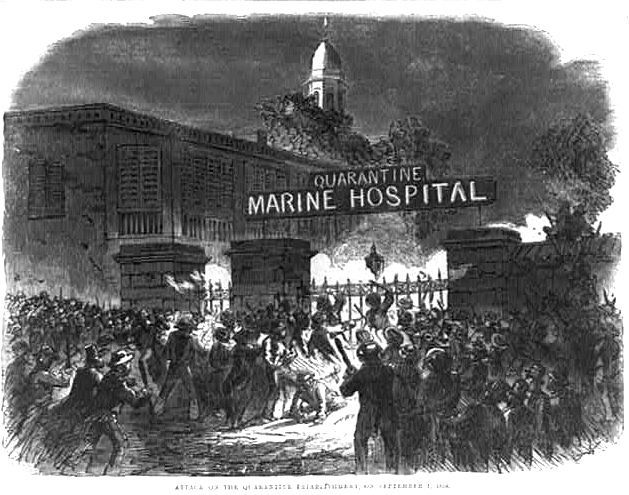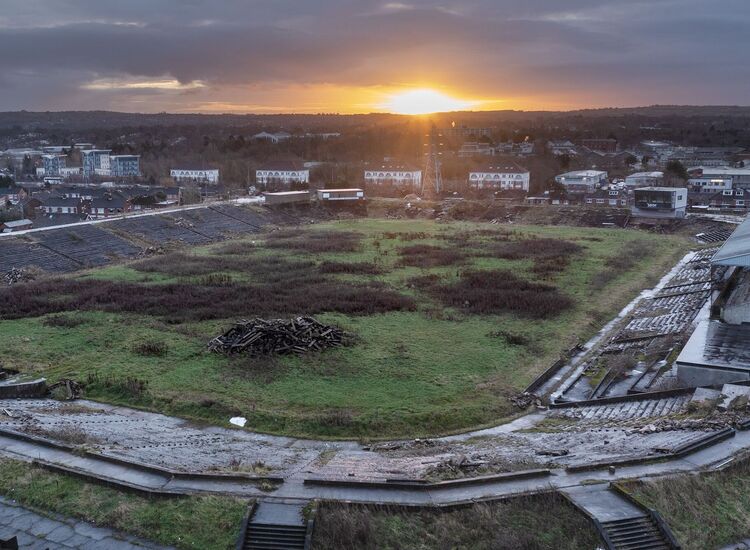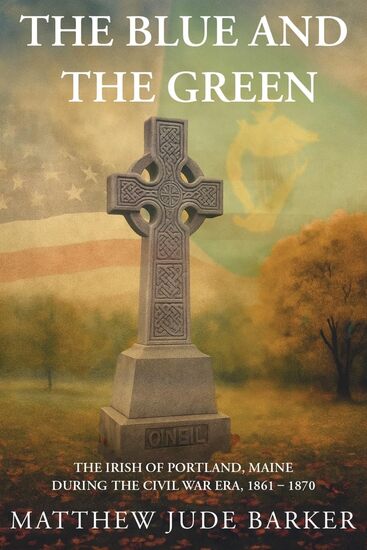An annual International Famine Commemoration Day ceremony occurred on May 21 at the former Marine Hospital and Quarantine Station on Staten Island. It was here that sick Irish immigrants during the famine years were quarantined and died in their thousands.
The perfectly formed hill in front of the St. George courthouse is where they are buried, trench-style. Using historical facts and images, Lynn Rogers of the Friends of Abandoned Cemeteries of Staten Island (FACSI) and myself of Ireland's Great Hunger Museum of Fairfield, FACSI volunteer and event organizer, took those attending the commemoration back in time on this inaugural "Famine Walk," painting a clearer picture of the Irish Famine emigrant/immigrant experience in New York during the years 1845-1852.
I spoke to the gathered crowd about the site's significance, comparing it to Grosse Isle in Quebec. In addition, I encouraged the group to dig deeper when doing their own research, explaining that although records were destroyed by the burning of the Marine Hospital and Quarantine Station in early September of 1858, in my preliminary research I discovered a William Smith from Manchester.
Smith had left from Liverpool in late fall of 1847 on the ship "India." In his book, "A Voice from Steerage," Smith shares minute details about his treatment at the quarantine, giving rare insight into how Irish famine emigrants would also have been treated.
Cathy Fahey, John Foley, President of Ireland's great Hunger Museum of Fairfield, Loretto Leary, Ireland's Great Hunger Museum of Fairfield, FASCI Volunteer and Event Organizer. 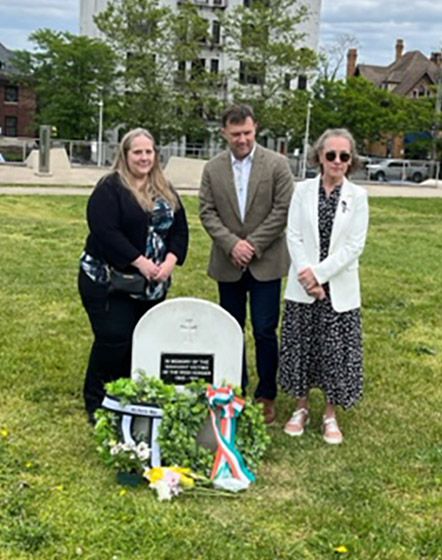
I also mentioned a discovery of James Irwin from Roscommon, who worked as an outdoor agent for the Irish Emigrant Society of that time. Irwin's role was to keep a list of all quarantined ships and their Irish passengers. Irwin's "logbook" contains vital information, such as a list of complaints and arrivals. If it still exists, it would provide rich new details about the nameless Irish Famine emigrants who died on Staten Island.
To spread awareness of and share new data discovered about the site, I encouraged attendees to tell others about the place’s history, dig deeper into their own research, and share what they find. As I reminded the attendees: "Rich people leave legacies; poor people leave memories. These people left nothing, not even their names," Leary said.
In a special posthumous tribute to the man responsible for the famine marker on site, Cathy Fahey spoke about her father, who, with Michael Blanch of the Committee for the Commemoration of Irish Famine Victims, paid for the making and the distribution of the simple black and white famine markers which stand on mass Irish famine graves throughout Ireland, Baltimore, and here on Staten Island. Bill Fahey passed away in December, 2022.
Before there was a bridge.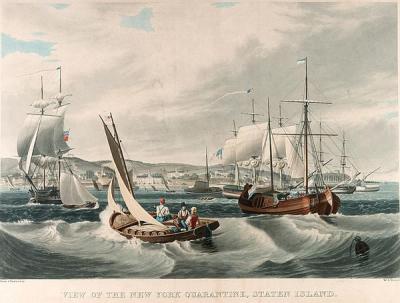
Cathy and her niece Casey Denaro vowed to continue his work and dedication to Staten Island's Irish famine victims. John Foley, President of Ireland's Great Hunger Museum of Fairfield, recounted his experience visiting the mass grave in Macroom, County Cork, comparing it to the burial ground beneath his feet. "Here, in this hallowed ground, I feel that weight once more as the spirits of the Irish victims intertwine with our presence.
But it is not just this place that reminds us of their enduring legacy," Foley said. "The Great Hunger Art Collection echoes their stories, etching them in the annals of history," he added. "They died like flies," says Rowan Gillespie, whose renowned famine sculptures throughout the globe are vigilant reminders of this dark part of Irish history.
John Foley delivers his remarks to the attendees. 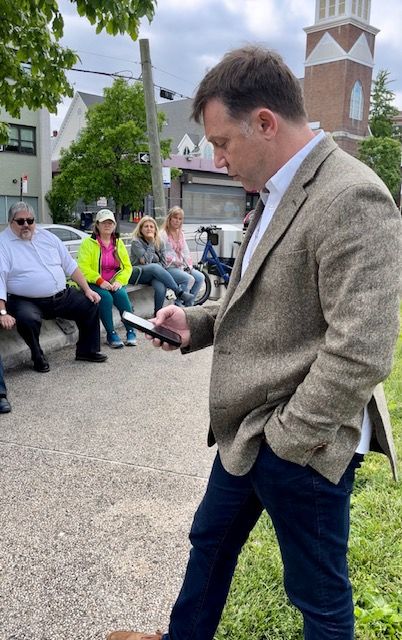
Gillespie's Statistic 1 & 2 sculptures, part of the Quinnipiac University Great Hunger collection, pays tribute to his time on Staten Island when Lynn Rogers provided him with the more than 350 names of those who died over six months from the end of 1849 through the first half of 1850.
Daithi Mac Lochlainn of the Gaelic League of Brooklyn closed the ceremony with a hymn in Gaelic, "Amhrán na Páise," "Song of the Passion." It is also known as "An t-Aiséirí" or "The Resurrection," a fitting tribute to the Irish Famine emigrants who died in their thousands and were buried unceremoniously on hope's doorstep. International Famine Commemoration Day is always the third Sunday in May.
A marker on the mass grave of Irish Famine victims who died at the Quarantine Hospital.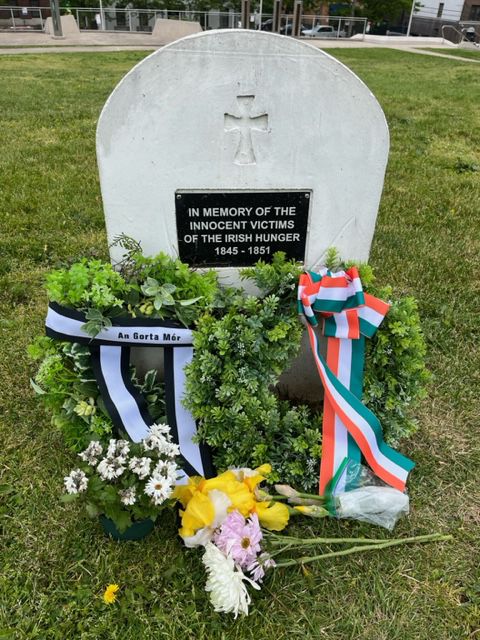
On Sunday, May 19 2024, we will host the 10th anniversary of the interment of the 83 intact bodies at the mass grave.

